Our teams have been hard at work building Virtual Buggy. This week, we have our first spotlight post: Concept Art with Vivi Nguyen! Vivi is a Junior studying Time Based Media Art and minoring in Human Computer Interaction. She enjoys the concept and visual development process, and is pursuing a career in animation, visual development, and HCI. Vivi has been a vital asset to our team, creating tons of great 2D artwork that has been fundamental in developing our game’s style.
For this post, we will have a Q & A-styled format, diving into Vivi’s artist process and her thoughts on our games development!
Q: What was your intent with this year’s concept art?
A: “We wanted the art direction to be different from the Buggy Allstars last year. So I went with a brighter distinct color palette and bolder shapes. Since the game this year is more surreal and imaginative, I explored how to exaggerate the buildings and environments. I drew environments with simple shapes and some textures so that it would be easy to transfer the concept art to the low poly models.”

Q: What references helped inspire your artwork?
A: “I looked at low-poly games to see how they utilized colors and shapes to create distinct environments. Games such as ART SQOOL, Good Job, Going Under, Sayonara Wild Hearts, and Monument Valley used surreal color palettes and bold shapes.”

Q: What was your process in developing this concept art?
A: “I start drawing very rough sketches, with an emphasis to exaggerate certain parts of the environment: twist the road, stretch buildings, etc. Then I reference my earlier colored drafts to match the color palette; I want to make sure that concept art from the same track design matches each other. I block out big sections to see how the colors work together, then I block out the lights and shadows. Each track takes place in different locations and has unique design elements, so I planned out each track to have a distinct color palette. For instance, the first track takes place outside, so the colors are bright and help reflect the warm sunlight. The second track takes place in a nighttime environment, so the colors are more cool-toned, and the objects themselves radiate bright light. The colors, textures, and shapes, of the concept art, convert pretty seamlessly onto the low-poly models. Hence, a lot of the style in the concept art is retained so far.”
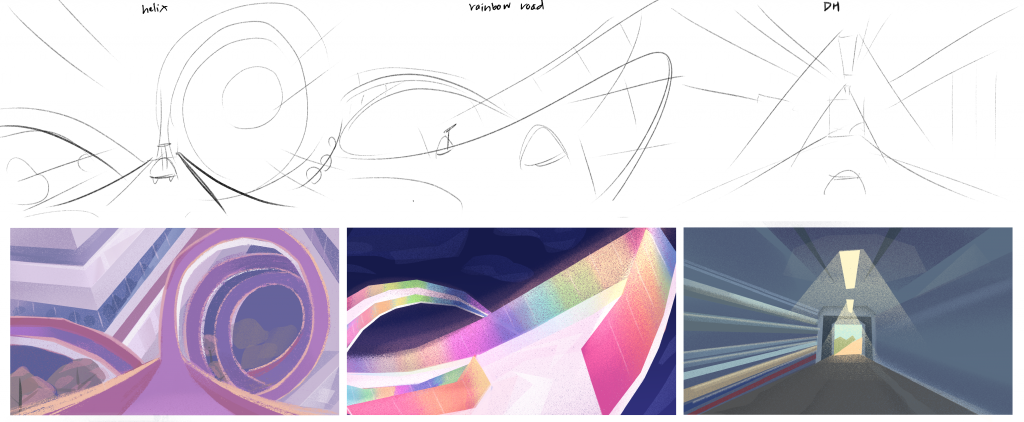
Q: Are there any specific pieces of concept art that you especially like?
A: “I enjoyed drawing the rainbow bridge and helix gates spiral since I could exaggerate the shapes as much as I wanted. I also liked drawing the scenes with the bus ramp and the driver, since it helps me understand how players interact with the environment.”

Q: Any final thoughts?
A: “I enjoyed working on these concepts and seeing them be translated into a 3D environment! I think the development of the project is going well so far. Seeing the other team’s progress and work is really exciting. The track designs are interesting and the soundtrack brings a lot of life into the game. We have a prototype build of the game, and I had fun playing and navigating the buggy around the track.”
Closing Remarks…
Thanks to all this great concept art, we have been able to translate it into stunning 3D models. Vivi’s talent and dedication is vital to our team, helping us make this year’s biggest, baddest, and buggiest game yet!
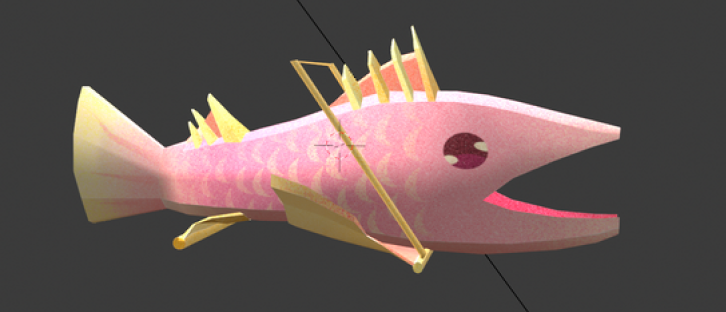
Gallery

Buggy Pushers 
Buggies from across
CMU history
Pusher going uphill 
Port Authority Bus Ramp 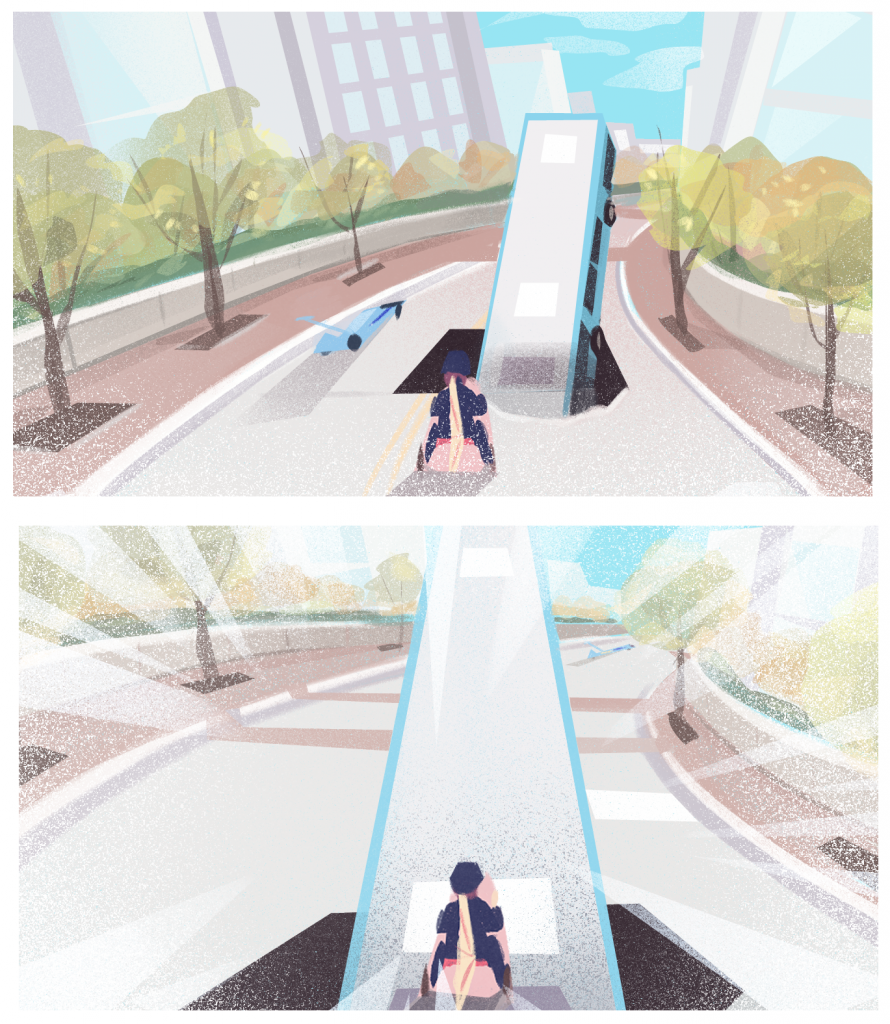
Ramp off the bus or
go around?
Track 1 curve 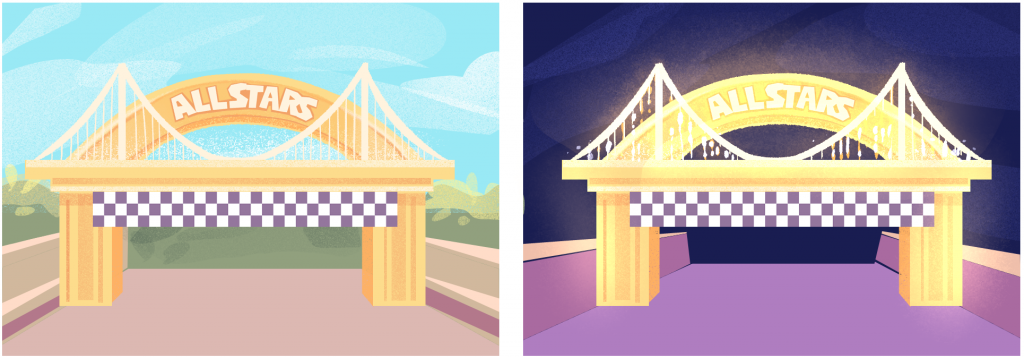
Schenley Bridge
Finish Line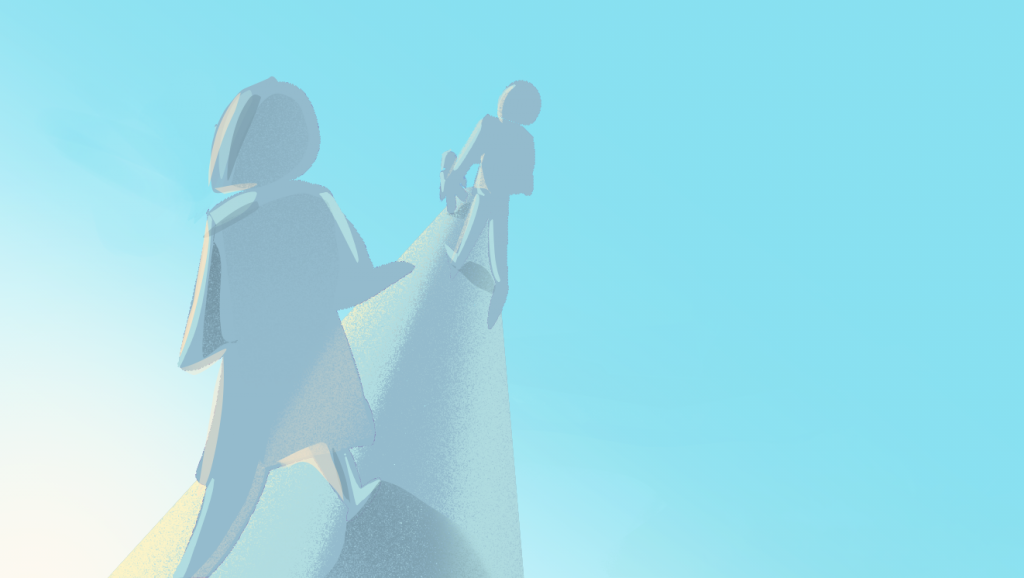
Walking to the Sky 
Rainbow Bridge
Drop Down
Far View
Pausch Rainbow Bridge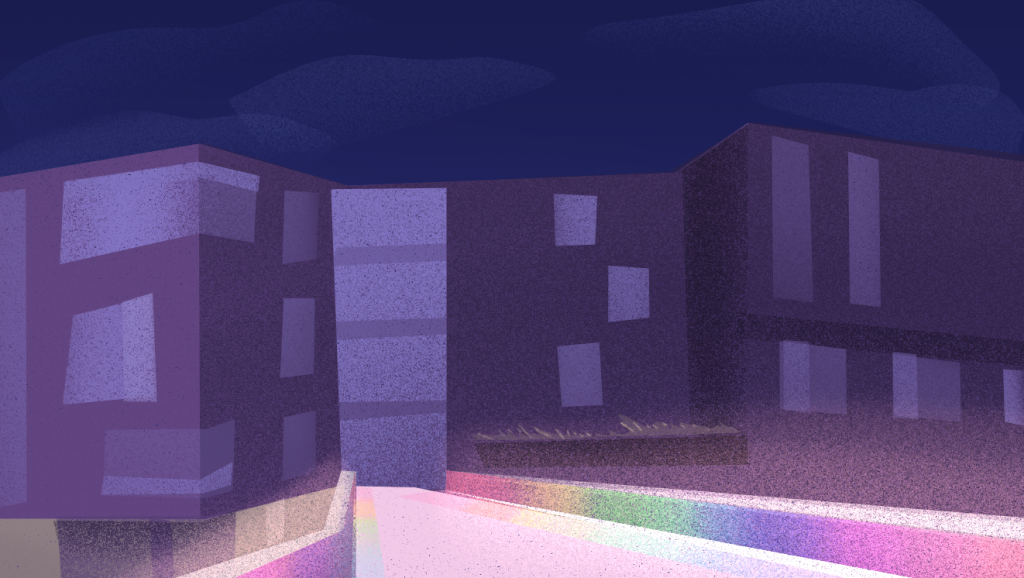
Buildings behind the Rainbow Bridge 
Swerves and curves along the Rainbow Bridge 
Pick-Up Items – Caffeine Boost, Distraction, and Slippery Attack 
3D modeled Fish Buggy 
3D modeled
No Name Buggy
3D modeled
Pirate Ship Buggy
3D modeled
Ascension Buggy
3D modeled Stealth buggy 
3D modeled Beta Buggy 
3D modeled Robo Buggy